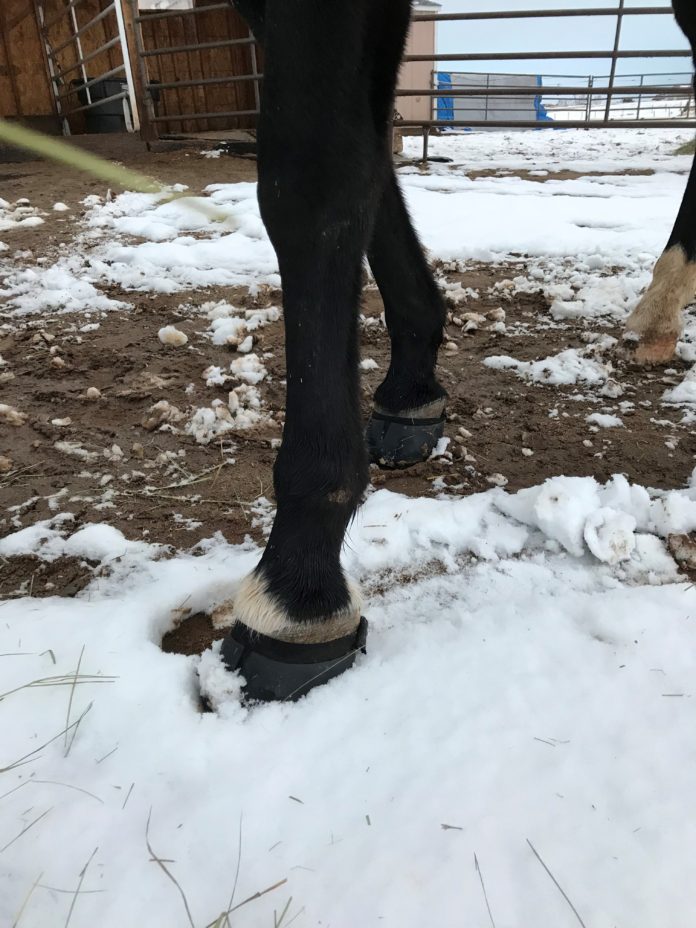Submitted by Product Specialist, Jordan Junkermann.
This is an extension and follow up from my blog, “Glue-Ons Without Glue.”
In February, I experimented a few different times with the Glue-On shell and Mueller tape. I took Pistol, my 6-year-old half Arabian, out on two trail rides with front boots on and ran my barrel horse Billie, a 19-year-old Quarter Horse, in a race also with front boots. The Monday after the barrel race, when I had shells still on both horses, there was our first big snow storm. Better late then never right? It provided an opportunity to see how the shells would stay on in the snow and mud.
The horses are on full turn out to pasture and have access to the paddock and run in shed. The total they have access to is about 3 acres. Generally, this would be a situation where boots see a lot of wear and tear. Some of our riding boots such as the Easyboot Trail, Old Mac G2 , or Epic have shown success in turn out situations. Our therapy boots like the Easyboot Cloud and Rx have a harder time withstanding the pressures of a frolicking horse. However, many people do see success in small pastures or large paddock areas. Our newest release, the Easyboot Stratus, may be a game changer in the Therapy aspect. But a boot like the Glue-On is durable, low profile, and below the hairline so it shouldn’t face the challenges that full coverage boots face. Keeping them on is definitely a concern.

What I found was that the Mueller tape with the Glue-On shells held up to snow, mud, full turn out, and stayed on for multiple days. I am pretty happy with this experiment. They stayed on for four days through a variety of weather changes. Of course, the Glue-On shell has the same restriction it has always had of not being able to be on for a longer trimming cycle. That shell fits best on a four week trimming cycle, which my horse’s are not currently on. It should not be left on, especially in moist environments, for longer then 10 days at a time. Using a packing material that has anti-fungal properties like EquiPak Copper Sulfate or Artimud will greatly reduce risk of thrush build up. Because the shell doesn’t expand as the hoof grows, it will interfere with hoof growth if left on for too long.
I do recommend checking on the shells every day, especially with snowy, wet environments. I didn’t check them very well after the first few days and once I did I noticed that after those initial four days of moisture having contact with the Mueller tape, the adhesive wore off. Only one shell after the fourth day stayed on. The other three boots (both of Billie’s and one of Pistol’s shells) fell off. Luckily I found two in the paddock and one in the pasture after searching for a while. Keeping that in mind, I think this application will be the most successful in drier environments. But as I said the shells did stay on with full pasture access and snow for four days.

At this point this type of application would work best for short periods of time when the horse needs added hoof protection. There has been some success in cutting a hole in the sole of the shell to provide airflow to the hoof and allowing the shell to stay on longer. However, this allows rocks access to the sole of the foot and other materials can get packed into that area. I don’t think it would be a good solution when using Mueller tape. I will definitely be using this type of application process again to continue testing the success rate in a variety of situations. Hopefully this gives some of you an alternative option to try out if your horse fits into the Glue-On shells! Happy booting!





